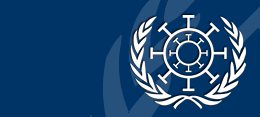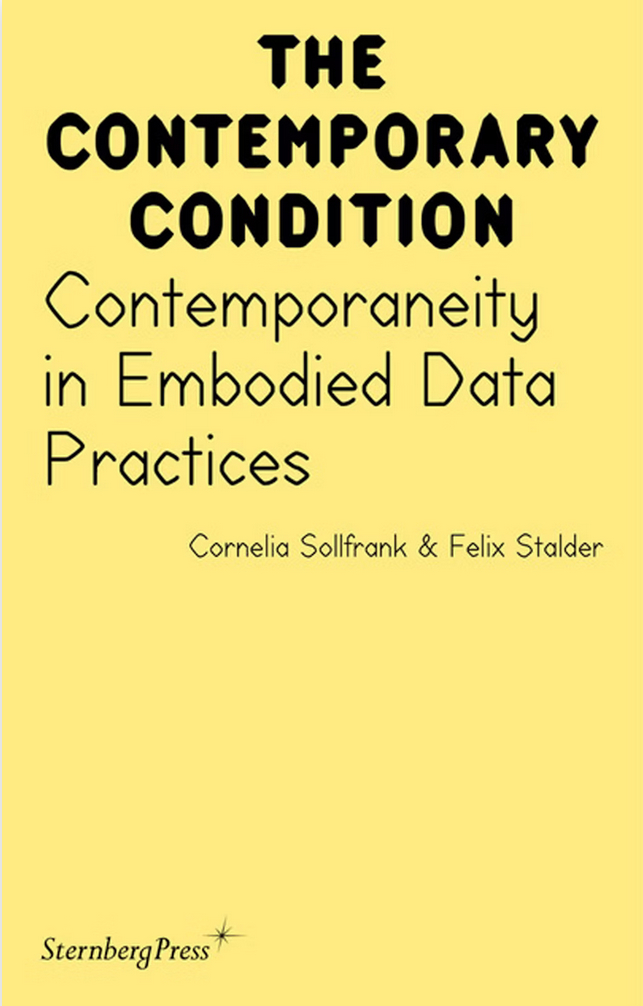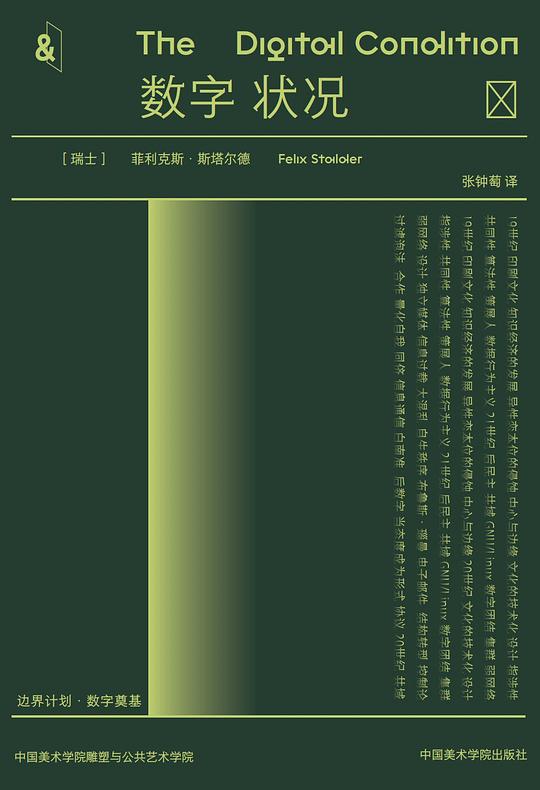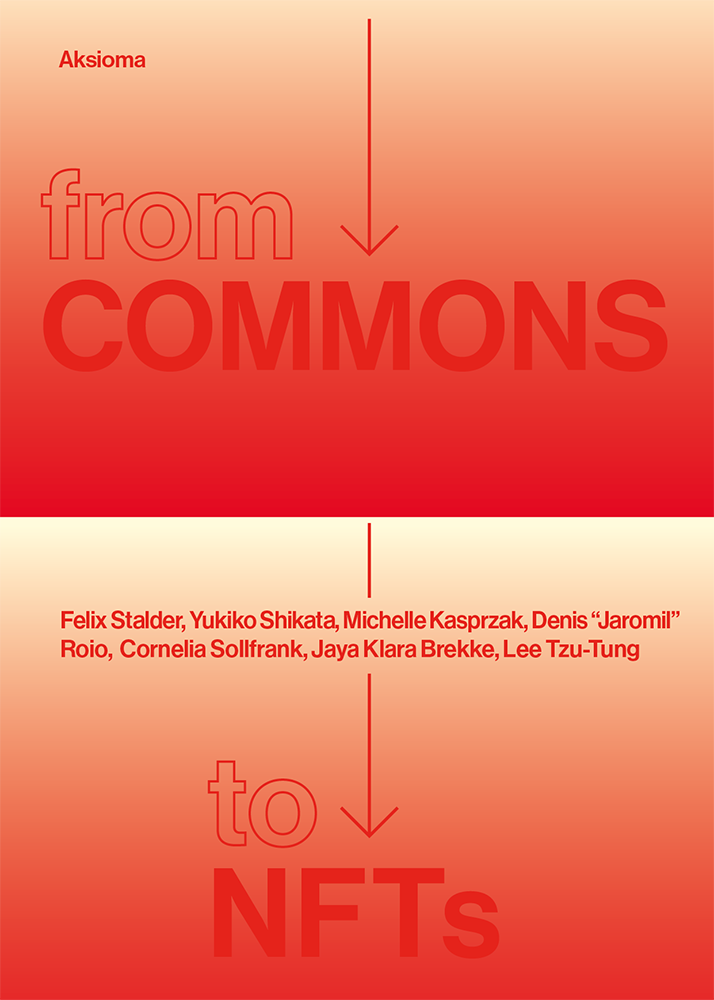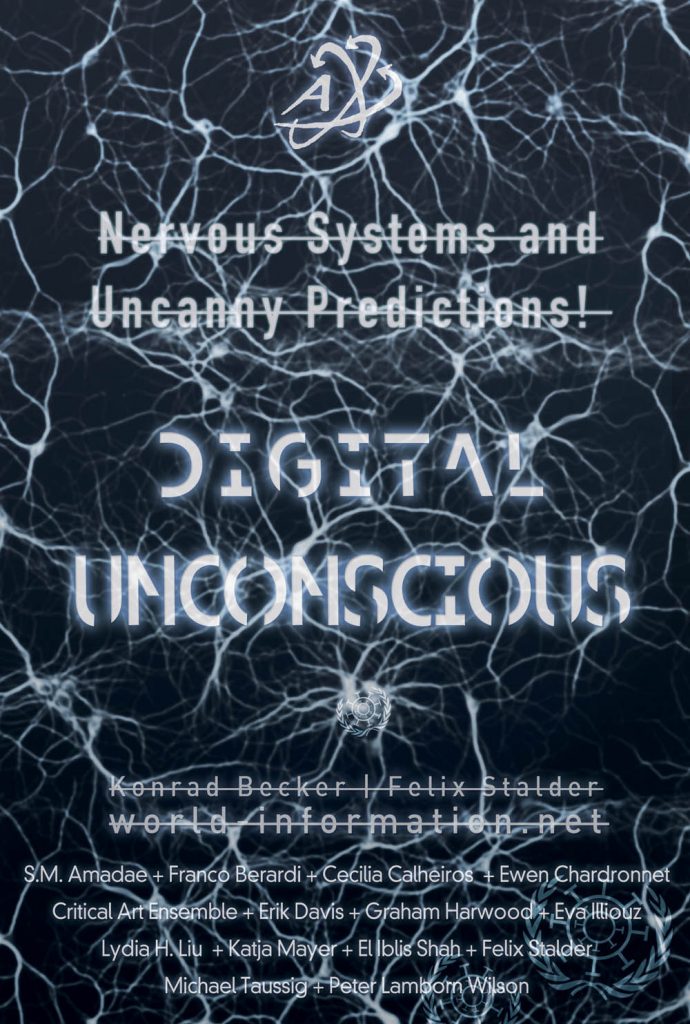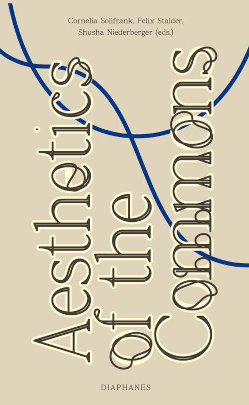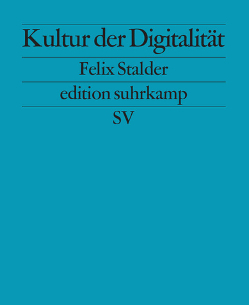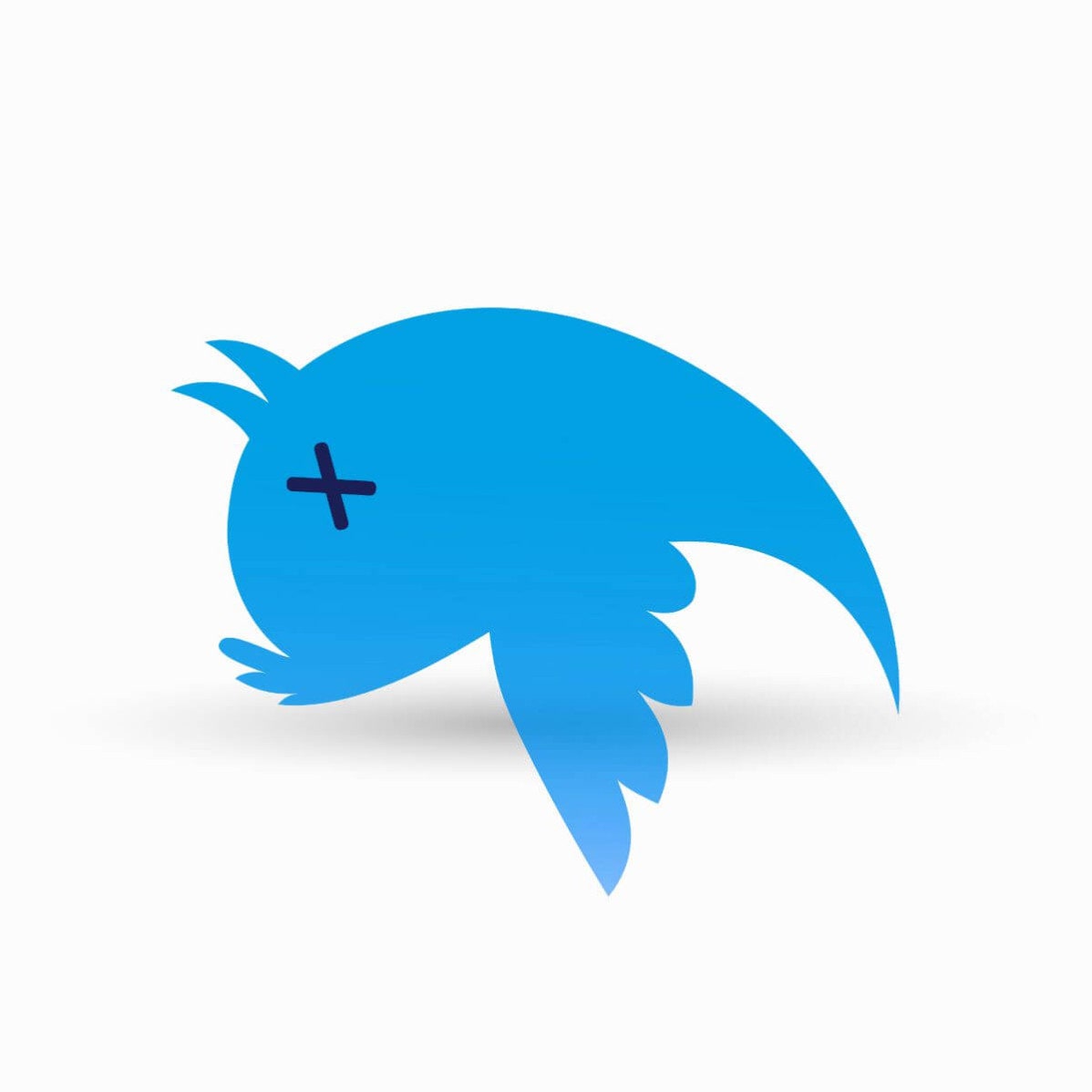
This text, which tries to summarize and situate the concepts and practices of the digital commons, is my contribution to the "Dictionary of the Human Economy". The editors explain in the introduction:
We want to bring to the attention of English readers some currents of economic theory and practice that have flourished in non-Anglophone countries over the last two decades, particularly in France, Brazil, Hispanic America and Scandinavia. To these we have added significanst work by English-speaking authors that was sidelined during neoliberalism‟s heyday and deserves to find a wider audience now. We have brought these strands of new thinking together under the umbrella concept of “the human economy” which refers to an emphasis both on what people do for themselves and on the need to find ways forward that must involve all humanity somehow.
Definition
The digital commons comprises informational resources created and shared within voluntary communities of varying size and interests. These resources are typically held de facto as communal, rather than private or public (i.e. state) property. Management of the resource is characteristically oriented towards use within the community, rather than exchange in the market. As a result, separation between producers and consumers is minimal in the digital commons.
The digital commons has generated new paradigms for the production and dissemination of cultural works and knowledge goods, based on the right of users to access, distribute and transform them. These new paradigms are articulated by three loosely aligned, networked social movements, each committed to large-scale, collective action aiming to transform social reality. The oldest and most advanced is the Free Software movement which focuses on software code. The Free Culture movement, which focuses on cultural goods, is younger and still somewhat in a formative phase. The Access to Knowledge (A2K) movement focuses on knowledge-intensive goods, such as scholarly publications or medicines. All three share an understanding that in a digital context cultural works and knowledge goods are fundamentally different from physical goods, since they can be easily and cheaply copied, shared and transformed. Because sharing means multiplying rather than dividing, they are naturally abundant. Thus, there is no ethical justification to prevent anyone from enjoying the benefits of using them. Scarcity exists only when it is artificially introduced after production.
At the political level, the Free Software movement aims to empower communities of users to use freely, examine and change what is arguably the most critical layer of the infrastructure of the network society, computer software. The Free Culture movement aims to increase semiotic democracy, that is, the ability of all people to take active part in the production of culture and to contribute freely to the exchanges that constitute public life. The Access to Knowledge movement aims at improving social equity, particularly in the North/South context, by removing barriers to access to knowledge goods, increase social welfare and broaden the range of actors who can contribute to their further development, particularly scientists in developing countries.
The emergence of the digital commons is one expression of a historical shift from the industrial economy (Fordism) to the networked economy. Firms and markets are reorganizing – away from large hierarchical firms producing for mass markets towards flexibly networked, smaller units producing highly targeted goods and services. Moreover, the scope for value creation expands from the economy proper into society at large, at least partially escaping from property regimes and the need for market exchange. The social reality produced by this structural transformation is variable and contradictory. The digital commons represents a cluster of practical visions to steer it in a more democratic and equitable direction by advancing processes of decentralization, lowering obstacles to participation and reducing positions of power created by monopolies over intellectual property. This commons represents a third model of social production, neither dependent on the state nor oriented towards the market, even though it may partially overlap with both.
Free Software
The new paradigm of producing in the digital commons emerged first in software development during the late 1980s. At that time, the notion of software as a standardized product for mass markets was still relatively new, established only in the mid 1970s by a new generation of companies such as Microsoft (founded in 1975). Before that, the computer industry regarded software as an add-on to the actual product, hardware. Improving software through mutual help among programmers was part of the original software culture, later reactivated as a strategy to fight the new, artificial separation between producers and users. To organize an alternative, Richard M. Stallman founded the Free Software movement to realize four essential freedoms in relation to software: the freedom to run the software for any purpose; the freedom to change the program without restrictions; the freedom to distribute copies of the program to help others; and the freedom to distribute changes of the program so that others might benefit from your work. To make these freedoms dependable, he drafted a license (the GNU General Public License or GPL), under which most Free Software is released today. The license includes the clause that whoever distributes the software – exact copies or improvements – must to do so under the same license. Those who do not agree with this condition have no right to use the software in the first place. Over time, the pool of free software grew considerably; and, when Linus Thorvalds contributed the last major missing piece (the kernel, Linux) in the early 1990s, an entire free operating system became available. At the end of the decade, Free Software (or Open Source Software, a term coined in 1998 to make it sound more business-friendly) began to reach the mainstream: first on the back-end (server software) and also in the last few years on the desktop and mobile devices.
The success of Free Software showed that under the conditions of the Internet – cheap "mass self-communication", decentralized distribution and sophisticated tools to organize information – open, self-directed cooperation was not only ethical, but at least in this case also very efficient in terms of quality, price and innovation. In competition with the Fordist model of production, a new institutional ecology emerged, characterized by open, yet highly structured volunteer communities, non-profit foundations serving these communities and commercial and non-commercial actors using and contributing to the common resource (the code basis) in the pursuit of their individual goals and strategies. A new business model was established that focused on solving unique problems rather than selling identical copies; and new social norms took hold that combined competition for personal recognition among peers with collaboration in solving shared problems. Copyright, while not altered on the level of formal law, was turned upside down in practice through free licenses that guaranteed user freedom instead of producer control. The Free Software movement has also become a powerful political force, supported by a growing segment of the information technology industry. In 2007, a coordinated political campaign at the level of the EU parliament succeeded in preventing a change in patent law that would have allowed businesses to patent ‘computer-implemented innovation’ (software patents). This was a historic achievement. For the first time ever, the expansion of intellectual property protections was halted with the help of an explicit argument drawn from the practice and vision of a digital commons and the production model of Free Software it enables.
Much of the Internet runs on Free Software and, without its availability and the strength of its diverse communities, the democratic potential of new technologies would be significantly smaller: more people would be excluded because software would be expensive rather than free of charge; media literacy would be lower because there would be fewer communities educating their members in how to use the software; the range of functionality and language versions would be more narrow, because there would be much less software for which there is social but not financial motivation; power would be more unbalanced because software would be more geared towards the interests of those who sell it, rather than those who use it; and the obstacles to innovation would be greater because lack of access to the source code of existing software would make it much more difficult to develop new software and services. Given software’s ability to enable and shape a vast range of social activities, the success of the Free Software movement has been very significant.
Free Culture
By the early 1990s, the Internet turned into a mass-medium for programmers, thereby setting the stage for the rapid development of the Free Software model. At the millennium, affordable computers had become powerful enough to support a broad range of (semi)professional cultural production, significantly lowering the barriers to many aspects of cultural production. Moreover, the Internet had spread widely throughout society (although unevenly in respect to region and class). Core sectors of the economy at large were changing from the logic of mass production to an ‘informational paradigm’ which demands communicative and creative skills from its workforce and vastly expands the field of cultural production (in the creative industries). Thus more people than ever before had the skills and the means to produce and distribute their own cultural works.
Cultural production has been deeply affected by the effects of cheap mass (self-)communication, easy conversion between media and decentralized distribution. First, remixing – using existing works to create new ones – has become central to cultural production. Second, subcultures of small or non-commercial cultural producers, long excluded by the efficient distribution mechanisms of the cultural industries, found themselves on the same technological footing with established players and able to connect to audiences of any size. This helped them to increase and improve their cultural output. Third, many of the actions that copyright law granted exclusively to rights-holders – making and distributing exact copies or transformed works – were now being done by masses of people without authorization, not in the privacy of their homes but online (that is, in public). Copyright fell into a deep crisis. Much of what constituted the new digital mass culture was a violation of copyright law and rights owners – fearing loss of control over cultural works which they regard as their exclusive property – organized to reassert that control. In a series of international agreements (most importantly, the World Intellectual Property Organization Copyright Treaty, 1996) and national legislations (for example, the US Digital Millennium Copyright Act, 1998 and the EU Copyright Directive, 2001) the rights of owners were strengthened. At the same time, litigation against copyright infringement escalated.
By the end of the 1990s, the tension between the enforcement of increasingly restrictive laws and the growing popularity of permissive cultural practices rose to the surface and spilled into the mainstream. In part as a response to the aggressiveness of the cultural industries, in part drawing inspiration from the Free Software movement, large numbers of users and producers recognized the need to defend their culture. Their goal has been to protect and advance the freedoms that had come to define the digital commons. In a series of influential books, Lawrence Lessig, a law professor and leading figure of the Free Culture movement, argued that recent changes in law and technology could easily restrict freedoms and create what he called a permission culture. This would allow owners of past cultural works to grant or withhold permission, at their discretion, to those seeking to create the culture of the present. The effect would be a vast increase in the control exercised by a few over the many, implemented through Digital Right Management (DRM) technologies and ubiquitous surveillance of social communication. This would cripple the potential for the emergence of a read/write culture in which the ability to consume cultural works (read) would be matched by that to produce them (write). For such a culture to flourish, he argued, people need to be able – technically, legally, and socially – to build on and transform the culture in which they live.
The Free Culture movement began to take shape. One focus was to develop tools allowing copyright law, as it exists, to support rather than restrict the sharing and transformation of cultural works. Following the lead of Free Software, a series of licenses was developed to enable creators to make their works available freely. Among the first were the Open Content License (1998) and the Free Art License (2000), both based closely on the GNU GPL license. In 2001, Creative Commons (CC) established itself as one of the central hubs of Free Culture, by offering easy-to-use, customizable licenses granting some rights to the public. Works published under a Creative Commons license are always freely usable for non-commercial purposes. Some versions of the license also allow free transformation of the works and others allow commercial use. A combination of good timing, solid and user-friendly implementation and significant support from leading American universities made CC licenses the de facto standard legal foundation of free culture. By mid 2009, it was estimated that some 250 million works had been published under one or other of the CC licenses. This mass adoption of CC licenses shows the breadth of the Free Culture movement.
In its wake, new models for production and distribution are emerging. The most widely successful Free Culture project is Wikipedia, an encyclopaedia that is cooperatively written (by 10 million registered users and countless anonymous ones in English language version alone) and financed by donations from the community. Since the project was started in 2001 it has become the most popular and comprehensive reference source online, used by about 330 million people every month (in mid 2009). While Wikipedia is the best known example, in all fields of cultural production there are successful experiments to develop an ecology to support free culture. The tools, practices and business models vary widely across domains. After all, writing an encyclopaedia is very different from shooting a film, and some cultural works can be produced cooperatively, while others are most interesting if they reflect the unique experience of an individual. Yet, across the whole range of these initiatives, there is a renewed understanding that the primary relation between author and audience, or more accurately, between producers and users, is not best expressed within a market, where commodities are exchanged, but within a community which produces collectively the cultural landscape within which individual works become meaningful. From this recognition, new patterns are emerging: of competition (for scarce resources such as recognition) and cooperation (in preserving, modifying and expanding a particular set of cultural practices). These comprise volunteer networks, non-profit and for-profit organizations, as well as a new mix of market- and community-oriented activities.
Despite the importance of CC for the Free Culture movement, the project has not been immune to criticism from within. The most pertinent issue raised has focused on the CC project’s failure to define freedom. It offers a series of licenses that are not only incompatible with each other (for example, works that allow commercial use cannot be remixed with those prohibiting it), but that also restrict users far more than do the Free Software licenses, after which CC was modelled. The most commonly used CC license does not allow commercial use and about a quarter of all CC-licensed works do not allow modifications. While some criticism has since been addressed by the CC project, this issue has revealed fundamental cleavages in the Free Culture movement. One side, grounded in the liberal philosophy of individual rights, takes as its starting point the affirmation of the right of creators to control how their works are being used. What is needed, in this view, are licenses to make it convenient to grant certain uses to the public, thus making copyright more workable in the digital domain. The other side, which is more influenced by the Free Software movement’s communitarian ethos, takes the separation of producers and users to be artificial and thus starts from the need of the community to access and build upon works with the aim of expanding the common pool of resources over time. Thus, the fact that a work (or part thereof) has been created by an individual person should give them the right of attribution (to gain recognition) but not the right to exclude others from using or building on it. For one side, such a communitarian orientation is one of several options (the most liberal CC license is, in practice, about the same as a Free Software license), for the other, it is the baseline of what Free Culture is about. While these philosophical differences are unlikely to be overcome any time soon, work is being done to reduce the friction in practice, for example, by reducing the incompatibility of the various free culture licenses, thereby increasing the flow of works across different domains.
Access to Knowledge (a2k)
An original stimulus for the a2k movement was the fight over access to anti-retroviral drugs in South Africa. During the 1990s, a new class of drugs had become available to fight the outbreak of HIV/AIDS, greatly improving the live-expectancy of people with the disease. These drugs, however, were sold in developing countries at prohibitively high prices, making them effectively unavailable to most people who needed them. To address this situation, the South-African government amended its laws to facilitate ‘parallel imports’, that is, buying not from official, but third party vendors, particularly Indian and Brazilian manufacturers of generic versions of the drugs. In response, 39 of the largest pharmaceutical manufacturers sued the South African government in 1998 as part of an effort, co-ordinated with US and EU governments, to prevent South Africa importing such products. This prompted an international campaign, lead by groups such as medicines sans frontiers, to support the South African government’s right to make these essential drugs accessible to its people. In 2001, this campaign succeeded when the law suit was withdrawn. This led other developing countries, despite ongoing pressures from the pharmaceuticals companies and Western governments, to issue similar legislation, enabling parallel import and compulsory licenses. In the course of such disputes, developing countries became increasingly vocal in asserting their interests in intellectual property policy and demanded that their needs, which were different from those of the IP industries, be recognized at the highest level of policy making, namely by the World Intellectual Property Organisation (WIPO), a sub-organization of the United Nations. The result of this was the formulation of the development agenda, which stated the need for access to intellectual property to meet development goals and for recognition of the ‘benefits of a rich public domain’ and called for the ‘protection of traditional knowledge’ as explicit goals of further policy development. After years of campaigning and lobbying through governments, the development agenda was formally adopted in 2007. Like the defeat of software patents in the European parliament, the adoption of the development agenda represents a major political victory. For the first time, the value of knowledge regimes other than personal and corporate IP was recognized and it was stated that concern for such forms of property need to be balanced with concern for social development.
The second major focus of the a2k movement is transformation of scientific publishing through open access. There is a well-established tradition that scientists publish their papers to their communities freely and receive no direct compensation for it. Over the last decade, however, the prices for commercial scientific journals, particularly in the natural and life sciences, have risen enormously, putting considerable strain on library budgets and reducing the range of scientists who have access to them. One of the answers to this problem is the creation of open access journals. In these journals, the scientific review process (peer review) is just as rigorous as in traditional ones, the main difference being that the final results, accepted papers, are made available free of charge to everyone, often under a CC license. In many ways, this is simply updating one of the central practices of modern science – submitting research results to the widest possible scrutiny through publication – by taking advantage of the possibilities afforded by the Internet. Since the beginning, with the Budapest Open Access Initiative in 2002, a large number of new open access journals have been created and many public funding bodies are now requiring that research funded by their grants be made freely accessible within a reasonable time span.
Like the Free Software and Free Culture movements, the a2k movement recognizes that, in order to enable free access, new models of production are necessary. How to finance the creation of the first copy? The model that requires the initial development costs to be offset by controlling access to subsequent copies is clearly broken. In the case of open access journals, this is relatively straight forward. Since the costs of running such a journal are comparatively low – after all writing and reviewing the papers is done by the scientists themselves and there are free software solutions to manage the work flow – the money can be raised either through contributions of by the scientists themselves (as part of general research funding) or through endowments and other community-based means. The case for drugs research is much more complex. One approach is to focus on large cash prizes, that is, to reward researchers directly for their work, which can then be made available to all, rather than by granting them patent rights to exploit monopolies. The advantage of a prize system to finance research would be not only that once the drugs have been approved there could be competition between generic manufacturers for production quality and price, but also that research could be more likely to be directed towards areas where there is a social need, but no market because the illnesses mainly affect poor people (for example, tuberculosis). In addition, free access to knowledge financed through prizes would facilitate innovative follow-up and lower prices across the board. Such a system can be justified on ethical as well as on economic grounds. In 2007 this idea was taken up by the World Health Organization which passed a resolution calling for proposals on “a range of incentive mechanisms ... addressing the linkage between the cost of research and development and the price of medicines ... with the objective of addressing diseases that disproportionately affect developing countries.”
Outlook
Within a relatively short period, moves towards the formation of a digital commons have been extremely successful in providing practical answers to urgent problems. These answers take full advantage of the new possibilities of a networked world where an unprecedented number of people have the skills and tools to contribute to the creation of value, while pursuing diverging economic, social, cultural or research interests. Although many political, legal and economic questions remain yet to be solved, the digital commons represents a paradigm change, whereby new technological, social and economic frameworks have already generated an informational order in outline that is socially more just, economically more productive and politically more democratic than the current regime of informational monopolies. This movement could unleash the empowering, rather than the controlling, potential of our new digital infrastructures. Yet, gains made so far are not yet sufficient, nor are they certain to endure.
Free Software is threatened by a commercial move towards ‘software as service’, where users no longer gain access to the software itself, but are allowed to use its front-end under ever-changing terms-of-service. When the software itself no longer needs to be distributed, the force of the Free Software license does not apply. Users could again become dependent on tools that are shielded from public scrutiny and developed to advance their owners’ rather than their users’ interests. The digital commons is threatened by the entertainment industry’s unrelenting drive to protect its outmoded business models through ever more draconian IP legislation. Yet, it is also threatened, perhaps more surprisingly, by the emergence of the social networking platforms of Web 2.0. Even as they enable many cooperative practices they also create new centres of power based on informational monopolies – this time not at the level of content, but through the user data amassed in the back-ends of centralized platforms. Here then, is the paradoxical situation of an infrastructure that realizes both the empowering and controlling potential of the new technologies, leaving users at the mercy of powerful corporations, which can, more or less subtly, shape their experience in way that is beneficial to their commercial interests. The policy gains of the A2K movement are threatened by shifts in the institutional setting for international policy-making, which might move away from formally representative, public bodies such as WIPO, if they are perceived as being hostile to the interests of power centres. Such a shifts may occur either through secret negotiations between a few states or by placing more emphasis on bilateral agreements between parties who bring very unequal power to the negotiating table.
In the information age, the way we access, use and distribute information, culture and knowledge goods goes to the heart of what kind of society we live in. The ethics and practices that constitute the digital commons are essential to realizing our human aspirations for meaningful democracy, social justice and a renewed experience of lived community and solidarity. The pieces are all there, but it will require a lot of creativity and determination to put them together into a picture that most of us will like.
Further reading
Benkler, Yochai (2006). The Wealth of Networks: How Social Production Transforms Markets and Freedom. Yale, University Press
Bollier, David (2008). Viral Spiral. How the Commoners Built a Digital Republic of Their Own . New York, London, New Press http://www.learcenter.org/pdf/ViralSpiral.pdf
Ghosh, Rishab Aiyer (ed.) (2006). CODE: Collaborative Ownership and the Digital Economy. Cambridge, MA, MIT Press
Castells, Manuel (2000). The Rise of the Network Society, The Information Age: Economy, Society and Culture, Vol. I (second edition). Oxford, Blackwell
Foti, Alex (2009). The Precariat and Climate Justice in the Great Recession. Great Recession (Nov. 3). URL: http://www.greatrecession.info/2009/11/03/the-precarious-question-and-th...
Hardt, Michael; Negri, Antonio (2009). Commonwealth. Cambridge, MA, Belknap Press of Harvard University Press
Hess, Charlotte; Ostrom, Elinor (eds.) (2007). Understanding Knowledge as a Commons. Cambridge, MA, MIT Press
Lessig, Lawrence (1999). Code and Other Laws of Cyberspace. New York, Basic Books
-------. (2004). Free Culture: How Big Media Uses Technology and the Law to Lock Down Culture and Control Creativity. New York, Penguin Press URL: http://www.free-culture.cc/freecontent/
Love, James; Hubbard, Tim (2007). The Big Idea: Prizes to Stimulate R&D for New Medicines. Chicago-Kent Law Review, Volume 82, Number 3. http://www.keionline.org/misc-docs/bigidea-prizes.pdf
Stalder, Felix (2005). Open Cultures and the Nature of Networks. edited by Kuda.org, Futura publikacije, Novi Sad and Revolver - Archiv für aktuelle Kunst, Frankfurt a.M. http://felix.openflows.com/pdf/Notebook_eng.pdf
Stallman, Richard M. (1996). The Free Software Definition.
http://www.gnu.org/philosophy/free-sw.html
__________________________________________________
Bibliographic reference for this text: Stalder, Felix (2010). Digital Commons. In: Hart, Keith; Laville, Jean-Louis; Cattani, Antonio David (eds). The Human Economy: A World Citizen's Guide. Cambridge, UK, Polity Press, pp. 313-324



